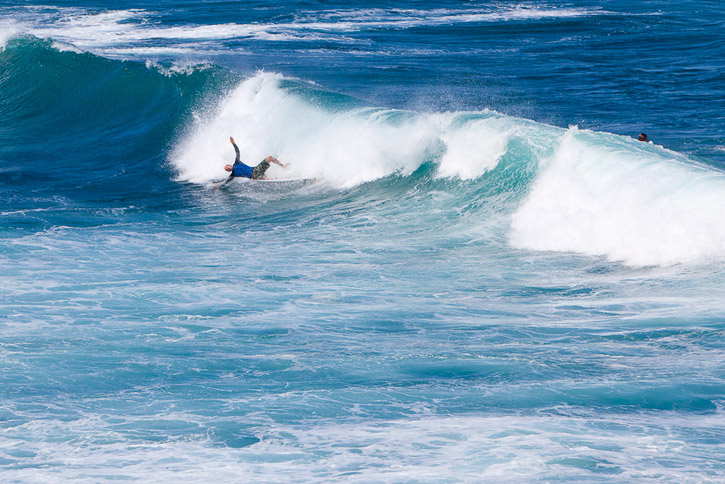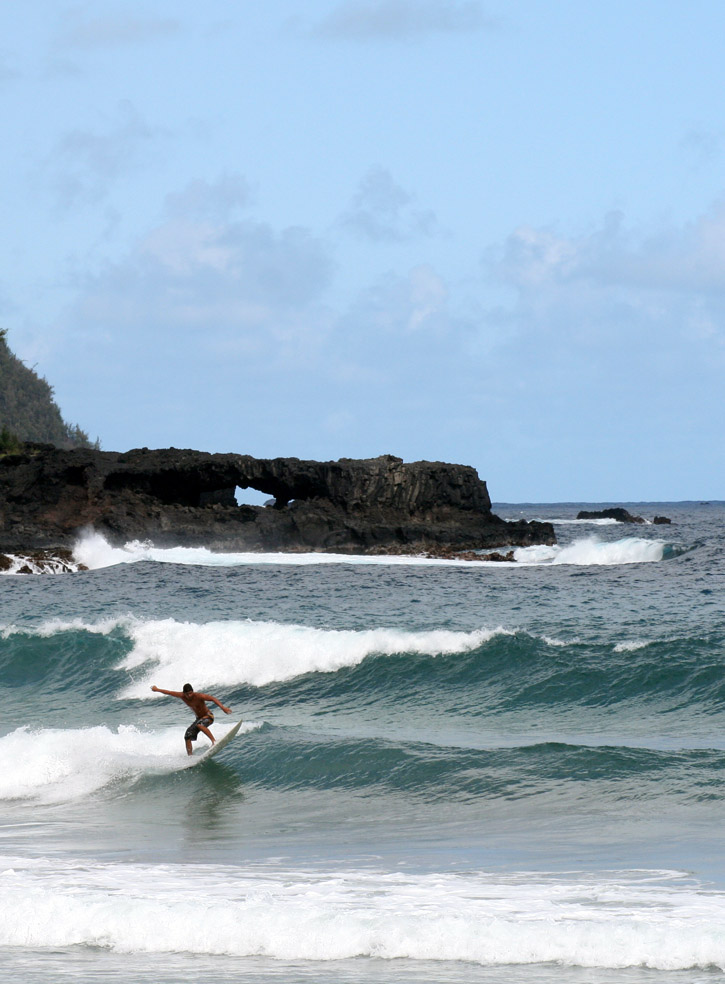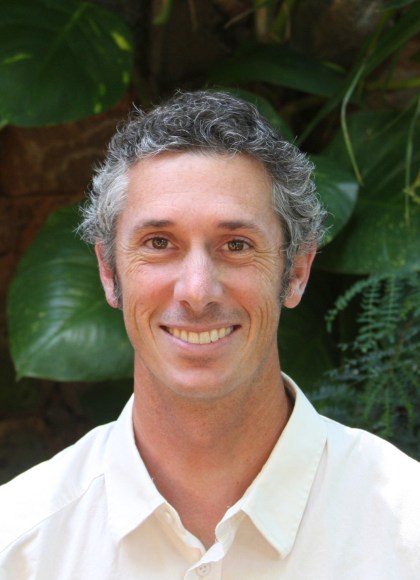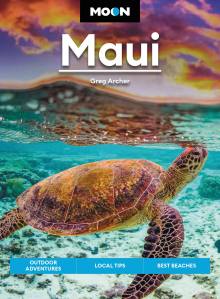East Maui Surfing
Surfing in East Maui is reserved for only intermediate and advanced surfers. While places such as Ho‘okipa Beach Park and Hamoa Bay can see surf at any time of the year, this stretch of coast roars to life October-April with massive North Pacific swells. This is some of the largest, heaviest surf on the planet. Most visitors are better off as spectators than participants. Even watching from the shoreline, you can still feel the rush of waves large enough to rumble the ground beneath you.

Pa‘ia
Surf Spots
Although it’s rarely surfed, a break in front of the lifeguard tower at Baldwin Beach offers fun longboarding before the afternoon wind picks up. If the surf is too large at places such as Ho‘okipa or Pa‘ia Bay, there is a reform on the shallow reef here that can offer a long ride if you know where to sit. The downside to surfing here is that on your way back in it can be a challenge to wrangle your longboard through the shorebreak. On the opposite side of the beach, down toward Baby Beach, there are also a couple of breaks better for shortboarding, although the rides are noticeably shorter and the entry and exit can be challenging.
If you’re renting a board in Pa‘ia, the closest beach break to town is Pa‘ia Bay. While the inside section is popular with bodyboarders, there is a second peak a little farther out that is better for surfing. Mornings are best before the wind blows the wave to pieces. Since the wave can be fast and steep, it’s best for intermediate surfers.
Moving east from town toward Hana, the left break at Tavares is popular with north shore locals, although since the wave can only handle a small crowd you need to be a competent surfer. The parking lot for Tavares is found by making a left at the house with the blue tile roof 0.6 mile outside of town and following the beach access sign to the end of the road. Paddling out from the beach can be shallow at low tide.
Newsletter Signup
By clicking ‘Sign Up,’ I acknowledge that I have read and agree to Hachette Book Group’s Privacy Policy and Terms of Use
The epicenter for surf on the island’s north shore will forever be Ho‘okipa Beach Park, three miles past the town of Pa‘ia. This legendary, windswept cove is a year-round playground for everyone from up-and-coming surf stars to world-champion windsurfers. For surfers, Ho‘okipa is broken up into four sections: Pavilions (Pavils), Middles, The Point, and Lanes. If you are standing on the beach, Pavilions is the break that’s the farthest to the right; a spot that can pick up wrapping windswell even during the summer. Since it’s the most consistent, it can also be the most localized, so beginners should only paddle out on the smallest of days. In the center of the beach, Middles is a big left that breaks in deep water and can get board-shatteringly heavy during the winter. The wave can accommodate a larger crowd than Pavils, although you should still be an intermediate to paddle out. On the left side of the beach is The Point, a heavy A-frame that’s popular with windsurfers. Finally, Lanes is a left-hand wave that breaks in the cove to the west of Ho‘okipa, but is frequently accessed by paddling around from the point. Since it’s such a long paddle, not as many surfers venture out there. If you’re an advanced surfer and want to escape the crowds, this can be a fun wave if you put in the effort. If you get stuck inside, however, the entry to shore can be over sharp, urchin-covered rocks.

Surfboard Rentals
The surfboard rental scene is remarkably casual. Both HI Tech Maui (58 Baldwin Ave., 808/579-9297, 9am-6pm daily) and Sailboards Maui (22 Baldwin Ave., 808/579-8432, 9:30am-7pm Mon.-Fri., 9:30am-6pm Sun.) offer board rental for $20/day. Both shops have a full range of longboards, shortboards, and fun boards. They are an affordable option for playing in the waves of Pa‘ia Bay or a multiday safari to Hana.
Surf Schools
Given the advanced surf conditions of the island’s North Shore, there aren’t nearly as many surf schools in East Maui as there are on parts of the island such as Lahaina or Kihei. There are a couple of highly personalized instruction services where you can learn from the island’s top surfers.
One of the best surf schools on the island is Rivers to the Sea (855/6284-7873), a first-class operation run by local Maui surfer Tide Rivers. Two of the island’s top surfers, Tide and his brother Kiva have gained a reputation for giving surf lessons to celebrities who pass through the area. All lessons are customized to the client’s ability level, but before venturing out on to the North Shore, take a lesson on the user-friendly waves of the south shore to get a firm grasp of the basics. Tide will meet beginners at a predetermined spot outside of Lahaina and guarantee to have you up and standing before the end of the 1.5-hour lesson. All instructors were born and raised in Hawaii. Lesson rates are $160 for a private lesson, $220 for two people, and $85/person for private groups of three or more. Photo packages are available.
Professional longboard surfer Zack Howard (808/214-7766) also offers the opportunity to surf on the North Shore. While most of his lessons are conducted at locations on the south shore on the road to Lahaina, advanced surfers can paddle out on the North Shore if the conditions are right. Lesson rates are $160 for a private lesson, $220 for two people, and $90/person for private groups of three or more.
Hana

Surf Spots
Although there are a number of secret spots scattered around the coastline, the two main Hana surf breaks frequented by visitors are Koki Beach and Hamoa Beach, both on Haneo‘o Road 1.5 miles past the town of Hana. Because of its easterly location, Hana gets waves any time of the year. Since the waves are often the result of easterly windswell, conditions can be rougher than elsewhere on the island. The steepness of the wave here is better suited for shortboards than for longboards. Koki is where many of Hana’s keiki (children) first learn how to pop up and ride.
Around the corner at Hamoa, the protected bay offers a respite from the trade winds. Whereas Koki breaks fairly close to shore, the wave at Hamoa breaks farther out over a combination of sand, reef, and rocks. On moderate days, this is a good place for riding a longboard or a stand-up board since the wave isn’t as steep, but the largest waves are reserved for locals and experts. There are no lifeguards at either beach in Hana.
Newsletter Signup
By clicking ‘Sign Up,’ I acknowledge that I have read and agree to Hachette Book Group’s Privacy Policy and Terms of Use
Pin it for Later



